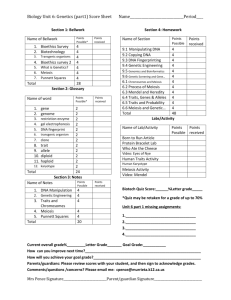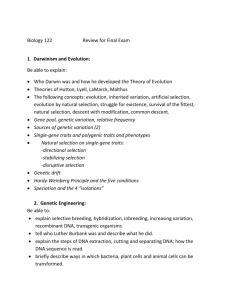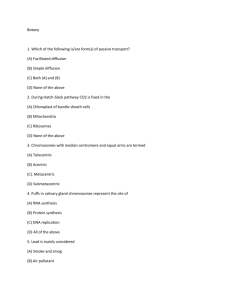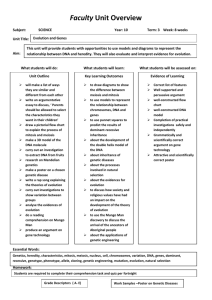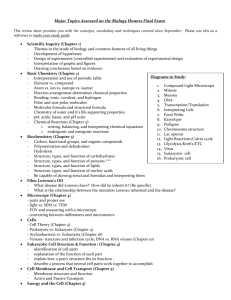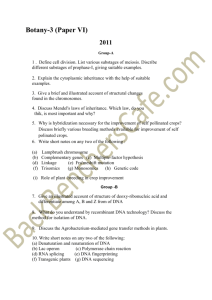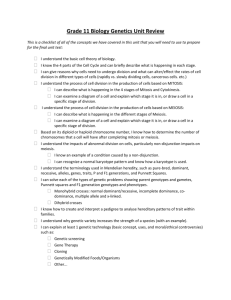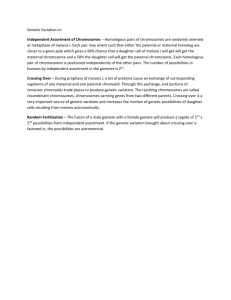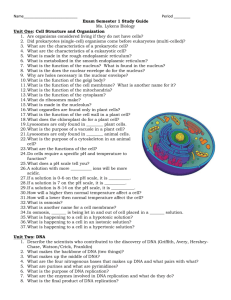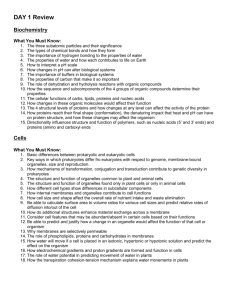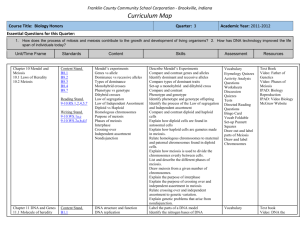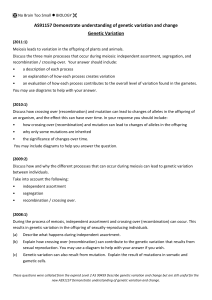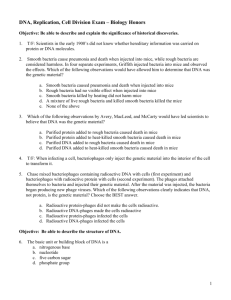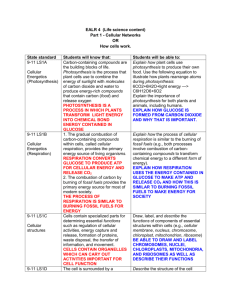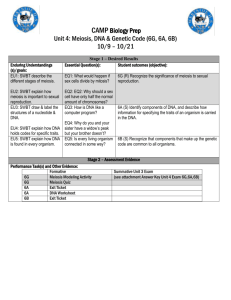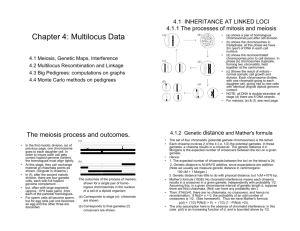Genetics Test Review Topics List and Practice Questions
advertisement
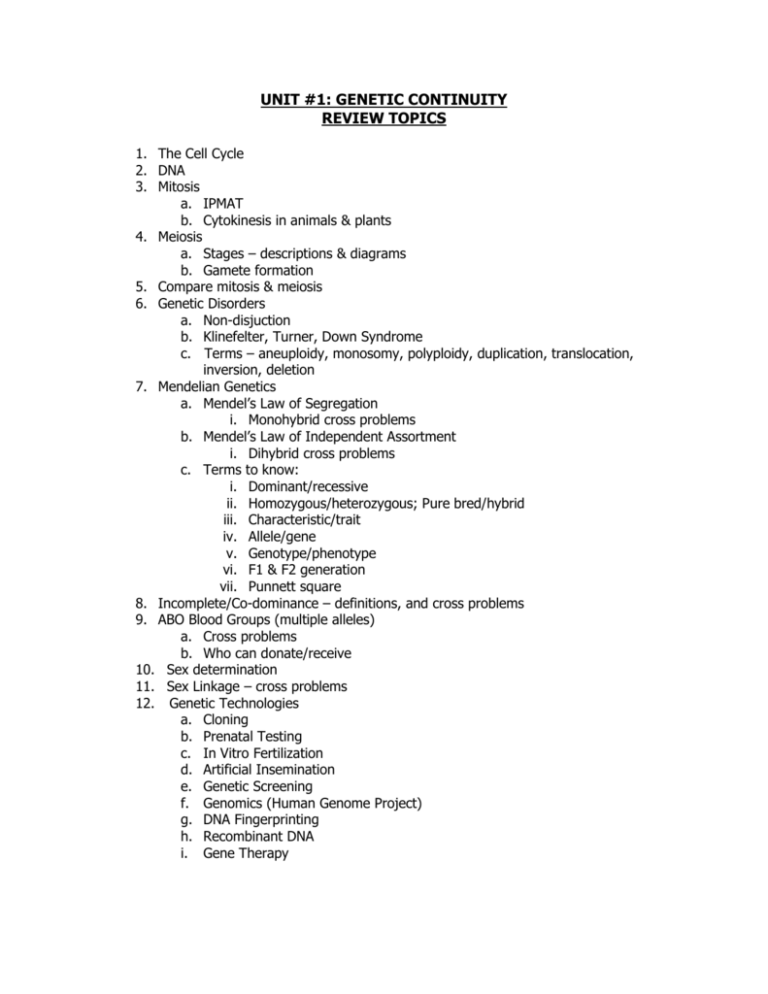
UNIT #1: GENETIC CONTINUITY REVIEW TOPICS 1. The Cell Cycle 2. DNA 3. Mitosis a. IPMAT b. Cytokinesis in animals & plants 4. Meiosis a. Stages – descriptions & diagrams b. Gamete formation 5. Compare mitosis & meiosis 6. Genetic Disorders a. Non-disjuction b. Klinefelter, Turner, Down Syndrome c. Terms – aneuploidy, monosomy, polyploidy, duplication, translocation, inversion, deletion 7. Mendelian Genetics a. Mendel’s Law of Segregation i. Monohybrid cross problems b. Mendel’s Law of Independent Assortment i. Dihybrid cross problems c. Terms to know: i. Dominant/recessive ii. Homozygous/heterozygous; Pure bred/hybrid iii. Characteristic/trait iv. Allele/gene v. Genotype/phenotype vi. F1 & F2 generation vii. Punnett square 8. Incomplete/Co-dominance – definitions, and cross problems 9. ABO Blood Groups (multiple alleles) a. Cross problems b. Who can donate/receive 10. Sex determination 11. Sex Linkage – cross problems 12. Genetic Technologies a. Cloning b. Prenatal Testing c. In Vitro Fertilization d. Artificial Insemination e. Genetic Screening f. Genomics (Human Genome Project) g. DNA Fingerprinting h. Recombinant DNA i. Gene Therapy SBI 3U1 – Genetic Continuity Test – Review Questions 1. 2. 3. 4. What does DNA stand for? Describe the structure of DNA. How many homologous pairs of chromosomes do humans have? (a) In what kind of cell does meiosis take place? (b) Why is it important for meiosis to take place in these cells? 5. Identify the stages in meiosis in which the cell would be (a) haploid (b) diploid. 6. Describe what is happening in a cell undergoing: (a) Anaphase I (b) Metaphase II (c) Telophase II 7. Sketch and label a cell undergoing Metaphase I. 8. Mistakes can occur in meiosis. Give an example of (and explain): (a) abnormal chromosome structure (b) abnormal chromosome number 9. What is meant by co-dominance? Give an example of a characteristic where co-dominance occurs. 10. If a trait is sex-linked, such as colour blindness, would you expect more males or females to be colourblind? Explain. 11. (a) How many pairs of a humans chromosomes determine gender? (b) What is the name of the kind of chromosomes, in humans, that do not determine gender? 12. If a woman has Type A blood, to whom can she donate blood? Who can she recieve blood from? Explain. 13. Breifly define/explain the following genetic technologies: (a) In vitro fertilizaiton (b) Cloning (c) DNA fingerprinting 14. What is the difference between a genotype and a phenotype? 15. Complete the genetic crosses on the handout provided by your teacher.
